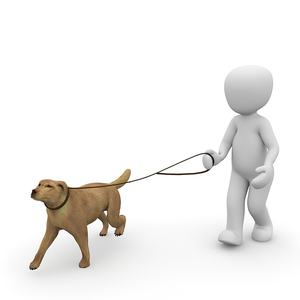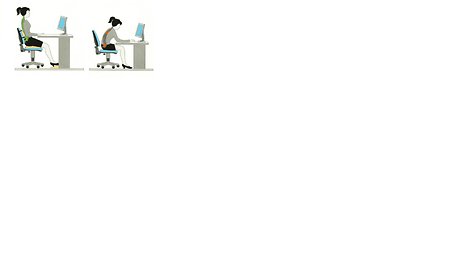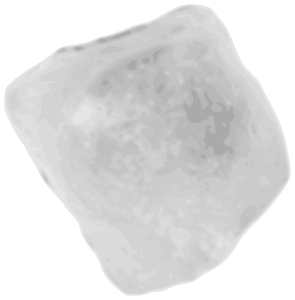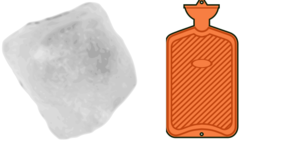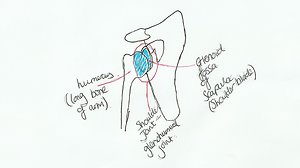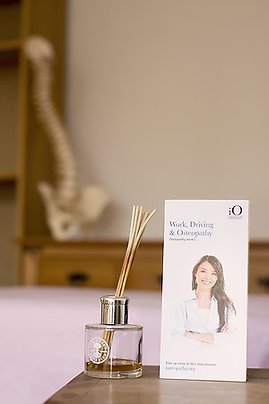Walking Your Dog
It has been great seeing lots of people out and about lately many walking their dogs in the fantastic parks that we have in the city. I have noticed however, that whilst walking their dogs on a lead many are pulled by the dog, be careful as this pull on one side of your body can cause stresses and strains. It is easy for us to walk with the dog on our more dominant and stronger side of our body but by doing this regularly you are more likely to get an injury. Try alternating with the other side to help strengthen both sides.
Gardening
With the sun beginning to shine and the days getting longer and warmer many of us are starting to think about tidying up our gardens. Here's some tips on looking after your body whilst looking after your garden.
Before you begin
It's best to warm your body up before you start, simple stretching exercises will help to warm your body up, also a gentle walk to get everything moving and blood pumping will set you up well to begin.
Weeding
Bending forward to weed is not the best position for your spine to be weeding, we generally move from one side of our bodies meaning that side is working harder than the opposite side. Try using a kneeling stool to protect your knee joints and make sure that you lean forward with a straight spine. Alternatively, try sitting on something like a low stool or sturdy bucket. Always making sure that you keep a straight spine.
Rest
Like all activities make sure that you take regular rests, if you are competing the same task for a period of time limit yourself to 30 minutes then take a break and come back to it.
Lifting
If you need to lift anything from the floor, make sure that it is not too heavy for you, if it is ask someone else to help. When lifting make sure that you bend your knees and lift from your hips, not by your back as this can cause strain to your back.
Water
As well as watering your plants make sure that you keep yourself hydrated. Plenty of water while you work will keep you hydrated.
Enjoy your garden, but make sure that you look after yourself.
For any further advise please do not hesitate to contact me.
Looking after your back at work
I have recently seen more people who work in an office environment and therefore spend long hours sitting at a desk. They often ask me for advice on how they can help their body whilst at work. Here are a few ideas on how to keep active at work and look after your back at work:
Make sure that your work station is at the correct height.
1)Monitor at eye level
2)Adjustable chair with lower back supported, to help keep an upright posture
3)Feet flat on the floor or on a foot rest
4)Elbows tucked into your waist
5)Minimal bend of your wrists.
Make excuses to get up from your desk at 30 minute or so intervals - make a drink, get some water, pop to the toilet, go to the printer.
If you need to contact a colleague go to see them rather than phone or email.
Have walking meetings.
If you are on a phone call try to do this standing or walk away from your desk so that you are not sat at the screen.
If in a presentation meeting try to stand rather than sit.
Cold or Hot treatment?
Following every treatment with a patient I will advice to either use cold or hot and cold hydrotherapy, here’s some information on when to use them.
Cold Hydrotherapy.
The purpose of this therapy is to reduce inflammation, pain and swelling in the affected area. Following injury the area becomes inflamed and swollen causing pain. During this phase the tissues become very congested. This form of hydrotherapy is aimed at reducing the inflammation and swelling, relieving some of the pain and helping the healing process.
How it is done:
1.Using a frozen pack from the freezer (e.g. frozen peas) wrapped in a tea-towel or small towel.
2.Apply to the area for 10 minutes.
3.Remove for 5 minutes.
4.Reapply the cold pack for 10 minutes.
5.Remove for 5 minutes.
6.Reapply the cold pack for 10 minutes.
7.Remove.
This is best to be completed regularly for the first 2-3 days following the injury.
Cold hydrotherapy is really effective with a new injury.
Hot and cold hydrotherapy
The purpose of this therapy is to improve the circulation in the affected area. Following an injury the area becomes inflamed causing pain, once this inflammatory response reduces the area becomes congested. This form of hydrotherapy is aimed at improving the circulation to relieve the congestion, relieve some of the pain and help the healing process.
How it is done:
1.Using a small towel, or the shower (whichever is easier).
2.Use cold water straight from the cold tap and warm water, but not too hot to bear.
3.Soak the towel (or use the shower) first in the warm water and apply to the area for 3 minutes.
4.Remove this pack and soak (or using the shower) in the cold water and apply for 1 minute.
5.Repeat the warm and then cold again. Repeat each 3 times, ALWAYS END WITH COLD.
This hydrotherapy works best after 2/3 days once the swelling has reduced or for long term pain.
Christmas Shopping
It's that time of year again when we are all out buying presents and food for our Christmas break.
It is tempting to try to do all of your shopping in one go, but be careful carrying lots at once. If you do have a lot to carry make sure that you carry it in both hands and not over one shoulder. This week I've had people contact me with shoulder and upper back or neck pain following a blitz of shopping.
If you do overdo it and are in pain the best initial way to help with the pain is to rest your shoulder, neck, upper back and put a cold pack on it - this involves something from the freezer (frozen peas are always good) wrap them in a towel and place them over the area of pain for 10 minutes, this can be repeated regularly for the next 2 days. Keep moving around but try not to overdo it, keep the areas moving gently.
If after that you are still in pain and are unable to move well please do contact me.
Good luck with the shopping.
Shoulder pain
Are you suffering with shoulder pain?
The main shoulder joint is a ball and socket joint, between the humerus (long bone of the arm) and glenoid (part of the shoulder blade). This joint is a very mobile joint because of the movements that we need to make to be able to do every day activities.
Sometimes overuse from a work activity, exercise class/activity or general movements cause problems with the shoulder joint, leading to pain on moving the shoulder, pain with getting comfortable sleeping when lying on the affected shoulder and getting a comfortable sleeping position that allows the shoulder to relax.
Because the joint is a mobile joint it is held in place by a group of muscles called the rotator cuff and ligaments that help to keep it stable. These muscles and ligaments can get inflamed and therefore painful to both touch and movement.
Hot and cold hydrotherapy around the joint can really help (see hot and cold blog), I would advice a hot water bottle in a towel and a tea towel sized towel made damp and put in the freezer that once frozen can be draped over the shoulder.
Osteopathic treatment assessing the whole body and the shoulder and treatment is very effective.
Gentle shoulder exercises are also very effective. A traction of the shoulder is a great exercise to keep it moving and to give the muscles a break. Let the arm hang down the side of the body and gently rotate in small circles, gravity gently pulls the joint apart whilst giving some movement to the joint.
Women, weights and weight bearing exercise
I was lucky in my early teens to get the opportunity to take up the sport of weight lifting. I grew up in a gym environment and at the time of the Seoul Olympic games my father’s partner was representing Great Britain, I decided that I would love to get this chance. I had a fantastic weightlifting career g competing and training all over the country and in Europe. I believe that this has kept me in good health, strength and balance into my mid years.
As we all age there is an increasing risk of osteoporosis (the weakening of our bones - making them more prone to fractures), this is especially true for post menopausal women. To help reduce these risks weight bearing and weight training exercise can help. When we are younger weight bearing exercise helps our body to lay strong bone structure, whilst weight training helps to strengthen our muscles that move our bones. As we age the structure reduces and bone density is lost, however, by keeping active with weight bearing exercise the level of bone density loss can be reduced and weight training will help with strength to aid in preventing the risk of falls.
Weight bearing exercise are those that involve using the whole body - walking (brisk is best), running, aerobic exercise including dancing, classes, hiit, sports activities - tennis, badminton, netball, football etc.
Weight training exercises are those that involve lifting, pushing, pulling weights and help to tone and shape the muscles.
An added bonus of building muscle tone is the increase in body metabolism, we use more calories the more muscle we have and toned muscles aesthetically look good.
